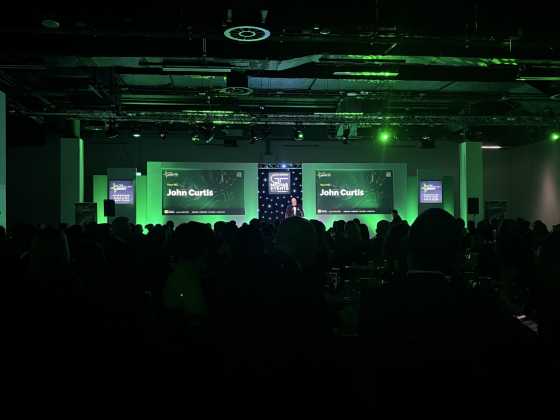GF Roundtable: Commercial vehicles

When it comes to heavier vans, there is little in the way of alternatives to diesel, making it difficult to make a low or zero-emission choice. Delegates at GreenFleet’s EV roundtable discussed this issue, as well as predictions that the grid might not be able to cope with mass on-peak charging of EVs
While commercial vehicles make up less than five per cent of vehicles on European roads, they account for almost 20 per cent of greenhouse gas emissions, according to industry analyst Frost & Sullivan. Lowering the carbon emissions from vans and lorries therefore has the potential to significantly reduce CO2 from road transport.
The government is pushing electric vehicles due to their zero tailpipe emissions, and there are a handful of small to medium electric vans on the market that are proving popular with fleets. Gnewt Cargo, Jersey Post and Leeds City Council, who were all in attendance at GreenFleet’s EV roundtable discussion, all operate electric vans on their fleet.
But beyond 3.5 tonnes (and below 11 tonnes), there is a gap in the market, the delegates agreed.
“The biggest market is the white van man yet it’s the bit we can’t grasp,” commented Michael Cook from Babcock International Group.
This is a particular issue for blue light services. Ambulances are 5.5 tonnes and their operational requirements are “hard to achieve”, says Chris Rutherford at London Ambulance Trust. They need to be able to get to emergencies without any concerns over range, as well as power life-saving equipment on board. Developing an electric ambulance is therefore no easy task, but it is something that Chris hopes to achieve one day.
“An electric ambulance would need to be able to have a 200 to 300‑mile range, be able to have heating and cooling on for a 12‑hour shift, as well as the ability to rapidly charge,” explains Chris.
While there are some larger electric commercial vehicles out there, which John Curtis describes as “few and far between”, there is also the cost factor as they are expensive.
Operating licences
Another factor that can work against people wanting to use larger electric commercial vehicles is that the extra weight of the batteries can push users into another operating category. The government is looking into whether to change this, however.
Currently, a motorist with an ordinary category B licence for a car can drive a van weighing up to 3,500kg. Electric vans are generally heavier than conventional diesel vans because of the battery they carry. This reduces the amount of goods they can carry or means van drivers have to apply for a category C licence, with the associated costs and medical report requirements.
Now the Department for Transport has published plans to allow motorists to drive vans weighing up to 4,250kg if they are powered by electricity, natural gas, LPG or hydrogen.
Transport Minister Jesse Norman explained that they “want to make it easier for businesses to opt for cleaner vehicles.”
But until this change happens, the vehicle operating categories of electric commercials remains a barrier, as does price and payload, says Lex’s Chris Chandler.
Electric buses, which are on an 18‑tonne or 26‑tonne chassis, meanwhile are becoming a familiar sight. London for example has over 170 electric buses and over 2,500 hybrids. Chris Rutherford explains that electric buses are possible because they “have the space for very large batteries.”
Strain on the grid
There has been a lot of noise recently about the effect that mass fast‑charging of electric vehicles at peak times will have on the national grid.
The grid’s Future Energy Scenarios report last summer suggested that a dramatic growth in electric vehicles could see peak electricity demand rise by more than the capacity of the Hinkley Point C nuclear power station by 2030.
In another scenario, the analysis suggested that 30 gigawatts (GW) of additional power could be needed at peak times by 2040 – the equivalent of almost 10 Hinkley Point C nuclear power stations.
Delegates at the roundtable agreed bleak predictions that the grid will not be able to cope is overly hyped and any issues will likely be overcome by the time EVs are commonplace.
Commenting on the report, Go Ultra Low’s Ben Wick’s says: “There is one scenario that says we might need 10 Hinckley Points but that assumes no smart charging, no vehicle to grid systems, and no increase in renewables. But then there is another scenario that says we don’t need any more power.”
Matthew Morgan from the Phoenix Works said: “There are companies called aggregators that manage this issue, with battery storage and vehicle to grid charging. When there is a massive demand on the grid they fire up a big hydroplant that will make that extra demand.”
Andrew Pickford from Leeds City Council believes that these negative headlines will be a convenient excuse for people to not buy electric cars. He said: “The issue of the grid is a bit of a red herring, and people will throw it up as a reason not to buy electric vehicles.”
Chris Chandler and Matthew Morgan pointed out that electricity consumption has actually gone down, and that its consumption is lower than it was in 1965. They were referring to data from BP in 2015, that showed that despite the economy tripling and the population increasing over the past 50 years, energy consumption had gone down by close to five per cent.
Matthew said: “With the energy efficiency savings made over the years, there’s actually already a lot of head room actually available on the grid. I think you can put about 50 million EVs on the road without doing anything.”






